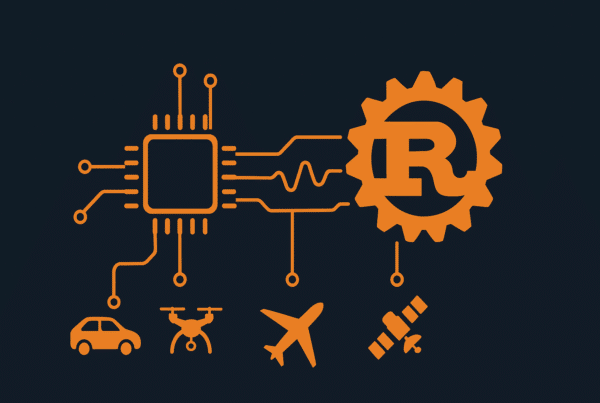Embedded C++ vs. Rust for Robotics and Autonomy: What to Use in 2025?
As robotics and autonomous vehicle (AV) systems become more intelligent and safety-critical, the programming languages used to build them matter more than ever.
In the embedded world, two frontrunners dominate the conversation in 2025: Embedded C++, the industry veteran, and Rust, the rising force focused on safety and modern tooling.
If you’re building the next-gen AV stack or deploying robotics at scale, here’s a fresh look at how these languages compare in the field today.
-
Performance & Real-Time Control
Embedded C++
- Highly optimized for real-time execution, with decades of vendor and industry support
- Offers fine-grained control over hardware with minimal runtime overhead
- Enables precise performance tuning through mature toolchains and debuggers (GCC, Clang, IAR, SEGGER, etc.)
Rust
- Zero-cost abstractions allow for performance speed on par with C++
- Ownership-based memory model prevents common bugs like crashes and memory leaks without needing a garbage collector, ideal for real-time systems
- Real-time capable with evolving frameworks like RTIC, Embassy, and async support
Winner: C++ remains the go-to for deeply constrained, real-time embedded systems. Rust is catching up quickly, especially for systems with more memory and complexity.
-
Safety and Reliability
Embedded C++
- Powerful but risky: prone to undefined behaviour, memory corruption, and manual memory management
- Relies heavily on coding standards like MISRA C++ and AUTOSAR
Rust
- Safety built into the language prevents null pointer dereferencing, buffer overflows, and data races at compile time
- Enforces strict ownership and lifetime rules
- Growing traction for safety-critical certification (ISO 26262, DO-178C)
Winner: Rust is engineered for safety. In domains where reliability is paramount, Rust provides stronger guarantees with less overhead.
-
Ecosystem and Tooling
Embedded C++
- Long-standing dominance in robotics (e.g., ROS, PX4)
- Comprehensive support from silicon vendors (ST, NXP, TI)
- Industrial-grade toolchains and debuggers (SEGGER, Keil, IAR)
Rust
- Rapidly maturing ecosystem (embedded-hal, probe-rs, defmt)
- ROS 2 support in development (ros2-rust)
- More community-driven than vendor-supported
Winner: C++, for now, has the advantage in production-ready environments and vendor tooling. Rust is ideal for R&D projects and is gaining traction.
-
Developer Experience
Embedded C++
- Steep learning curve with modern C++ idioms and templates
- Debugging memory issues can be time-consuming
- Familiarity across most embedded engineers
Rust
- Clear, modern syntax with helpful compiler feedback
- Modern tooling, such as Cargo, simplifies project setup, building, testing, and dependency management
- Ownership system enforces discipline early, but comes with a learning curve
Winner: Rust often leads to fewer bugs and easier long-term maintenance, especially for teams willing to climb the initial learning curve.
-
Adoption in the Field
C++ in Action:
- Core to systems at Tesla, Waymo, NVIDIA, and most ROS 2-based robotics
- Trusted and tested for AV perception, planning, and control
Rust in Action:
- Used by Cruise for safety-critical components
- Adopted by companies like Embark Studios, Ferrous Systems, and OxidOS
- Gaining popularity in drone firmware, hobby robotics, and AV middleware experimentation
The Future: It’s Not Either/Or
Hybrid architectures are already emerging:
- C++ for perception-heavy workloads or deeply optimized control loops
- Rust for mission-critical safety controllers, diagnostics, and tooling layers
In 2025, the smarter question isn’t “C++ or Rust?” but “Where does each fit best in your autonomy stack?”
Hiring for Robotics and Autonomy Teams?
If you’re scaling embedded systems teams for robotics or AV, the C++ vs. Rust debate isn’t just technical – it’s strategic; the language you bet on today shapes your hiring pipeline, team velocity, and long-term maintainability.
I’m actively connected with top-tier engineers across both stacks. As a recruiter deeply embedded in this space, I’m seeing a rising demand for Rust-fluent embedded engineers, while senior Embedded C++ talent remains competitive and specialized.
If you’d like to discuss how we can build a team that matches your tech direction, please reach out to: luiza@akkar.com.







